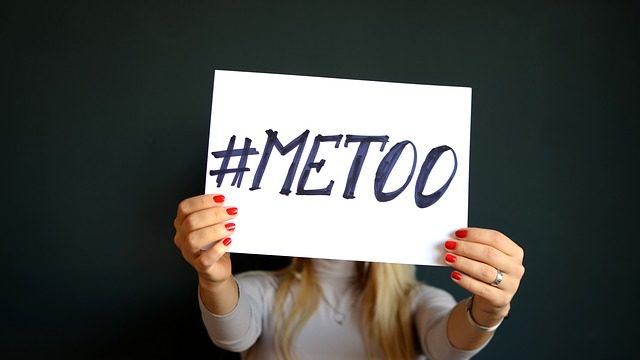You can’t log on to social media or open up any online news source without being barraged by headlines attached to stories where employees, CEO’s, or people in prominent positions are being accused of behaving badly. Whether their behavior happened inside or outside the office, it’s having an impact on the bottom line for the organizations they work for, or lead. Here are just a few examples you might have seen: Uber, The Weinstein Company, Chicago Bulls player: Nikola Mirotic, Kevin Spacey and Restaurateur: John Besh. The “bad behavior” in these examples range from unprofessional to down right illegal.
There is no single answer that guarantees the improvement in the behavior of an employee behaving badly. Oftentimes, as in the cases mentioned above, the alleged offending employee is a leader, top producer or essential part of the organization, and reprimanding or punishing this kind of rockstar has a potentially negative effect on the entire company. So what could the companies have done with these employees to discourage their behavior before it made headlines?
Ideally you could avoid the situation completely by understanding that the employee has this kind of tendency before you even hire them. However, this is extremely difficult because the unattractive behavior employees are often guilty of is not displayed during the interview process. Even if you have an interview process packed with behavioral questions and tasks, it’s likely that the candidate can hide their toxic behavioral tendencies. Additionally, reference checks are unlikely to expose any previous issues because the candidate is savvy enough to give the contact information of people who either tolerated or supported any previous unattractive tendencies. Also, a person acting as a reference has likely been contacted by the candidate, so they know the call or email is coming and have prepared accordingly. Additionally, from a legal perspective, the person giving the reference might also only talk about the candidate’s favorable characteristics for fear of being sued by the candidate if he or she doesn’t get the job as a result of what was discussed during the reference check. Lastly, some candidates aren’t even aware of their toxic behavior and are downright unable to admit it because they haven’t been reprimanded for it, and haven’t had to face it themselves.
So if you didn’t see the signs that the employee would be likely to put your organization at risk as a result of their behavior prior to hiring them, how do you deal with it once you know it’s happening? If an employee has gone on record to make a formal complaint, you’re obligated to review the complaint and investigate. However, if it’s come to the company’s attention through the “grapevine,” or as a result of a less formal conversation, start looking into the situation by trying to understand the pattern of the alleged behavior. Try to determine if there’s another employee that is “joining in” on the negative behavior, or acts as a catalyst to inspire the offensive act. If the behavior happens because these two employees are “buddies” and doesn’t occur if they’re seperated, start with surrounding these employees by other people who won’t join in and have a track record of being exemplary employees.
If the behavior isn’t a result of the “buddy syndrome,” engage the employee. Meaning, sit down with them and explain their value to the organization. Tell them how much their work contributes to the financial and overall success of the company. But also explain how the recent accusations cast a shadow over all of their contributions, and if they can’t rein in their toxic behavior, you’ll have no choice but to ask them to move on. If you have actual financial examples of how their behavior has negatively affected the company, this would be the conversation to present those figures.
Lastly, provide training. This is especially valuable when sexual harassment is the offensive behavior. Training around what constitutes appropriate and inappropriate behavior when it comes to the opposite sex causes employees to take a look at their own actions and make different choices. Bringing awareness to offensive behavior allows employees to understand how their choices may have offended other co-workers in the past, but after training, will be armed with the knowledge to avoid potentially dangerous behavior.
As a very last resort, you can choose to let this employee go. If you provide course correction, set appropriate expectations and monitor the outcome without success, you may have to choose which consequences have a bigger impact. Let’s look at the consequences. You are having to weigh the impact of letting the employee go, the outcome of letting the employee stay and anticipating the behavior will continue on some level, and deciding if the desire to do the right thing for the affected employee(s) supersedes the potential impact to the company. Deciding to part ways with an influential, successful employee is an expensive and difficult decision. However, if all the other aforementioned strategies fail, you may have no other option than to terminate the employee in order to avoid legal repercussions or a mass exodus of employees affected by this one person’s behavior.
So why do organizations fail to do anything with employees behaving badly? There seem to be four main explanations/ excuses for why organizations fail to address toxic behavior. One, the manager or board that has direct responsibility for this employee is “too busy” to deal with it, so it goes unaddressed. Two, it’s too uncomfortable to address the behavior. Three, no one in the organization has the skills to deal with the confrontation and accompanying circumstances correctly. Four, the choice is being made to ignore the problem due to the person’s value to the company. However, none of these “explanations” should trump the fact that it needs to be addressed. The risk of leaving toxic behavior unchecked can lead to bigger consequences than the discomfort in having the conversation with the offending employee, or the financial implications to get the right assistance or training to handle it.
Realistically, every organization will have a behavioral issue with an employee to confront at some point in its operation. The sooner you acknowledge the behavior exists, the more quickly you can craft a plan of action to stop it. Yes, it’s easier to stick your head in the sand and hope the employee “shapes up” on their own, but that kind of thinking is much more likely to land you in the headlines.


